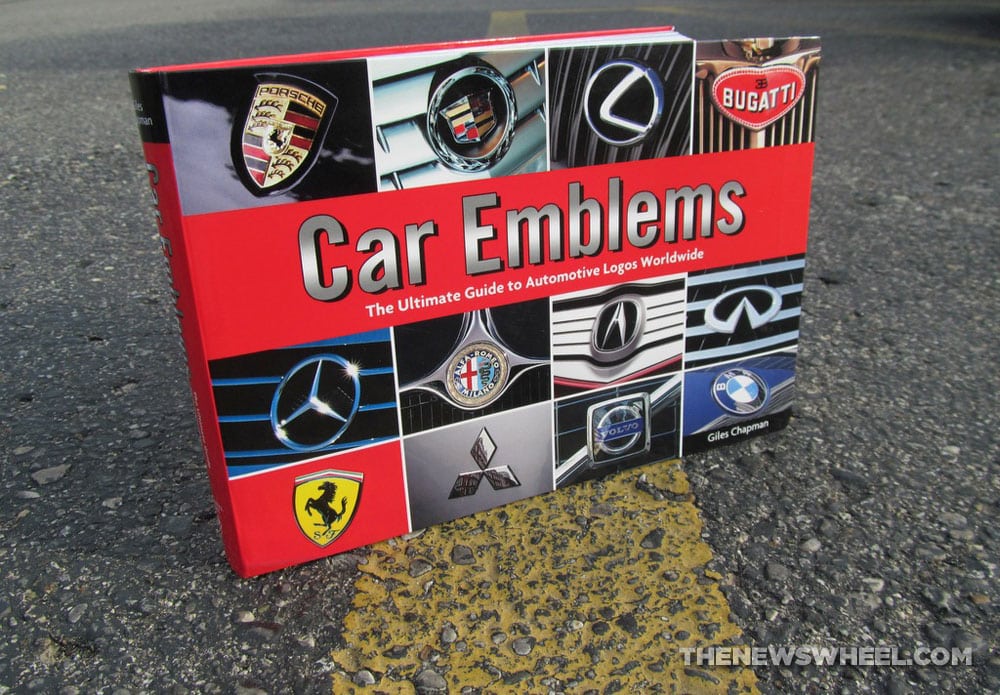Car badges may have begun as mobile marketing, a branding tool used to sell more cars, but over the last century they’ve grown into an art that deserves a closer look. The idea behind Car Emblems is fascinating and deserves a through exploration; you don’t have to be a gear-head to find car brand logos interesting for their artistic and marketing value.
I’ve personally been enamored with this subject for the past year as I’ve been studying the logos of every major automaker in my Behind the Badge article series. That’s why I was so excited to find out about this latest reprint of Giles Champan’s 2005 Car Emblems (alternatively titled Car Badges in some printings).
However, while this handy “ultimate guide” might be exhaustively researched, it isn’t what car logo fanatics will expect.
Product Details: Flexibound cover, 320 pages, 8.8 x 6.2 inches
Price: $14.99
Publication Date: October 2015
Publisher: Chartwell Books, an imprint of Quarto Publishing Group
ISBN: 9780785831334
More Book Reviews: Read our review of this nifty Steve McQueen Graphic Novel
Synopsis
Ten years ago, Merrell Publishers Ltd released a book by Giles Chapman in which he detailed the origins and prominent logos of 125 automobile manufacturers from around the world. Car Emblems is being re-released this month by Chartwell Books with a redesigned cover and minor alterations.
The hefty handbook contains over 1,000 photographs and illustrations paired with single-page entries detailing the background on each company and its logo. It presents itself as a must-have guide to identifying and understanding car logos.
Giles Chapman has written dozens of popular automotive books focused on unusual subjects and curiosities (such as The Worst Cars Ever Sold and How to Make Money at Car Boot Sales). He’s a respected authority on automotive subjects and his work has been carried in numerous journals and magazines.
Product Quality
For $15, the binding and and materials used on Car Emblems is a great value.
The stiff Flexibound cover is a step above softcover that holds its 320 pages together yet still allows the reader to flip through them with ease (though it does form creases quickly). The cover design is eye-grabbing and exciting, while the back cover has excessive empty space and could be more attractive.
The pages are thick and durable; the photographs stretch edge-to-edge on each page, but generally appear faded due to their vintage quality. Each automaker’s entry is identified by its logo thumbnail in the top-left corner of the page. The book could use a table of contents or a reverse-lookup for people wishing to jump right to a specific logo or automaker.
The book’s unusual dimensions are meant to fit in your glovebox–a clever design to encourage readers to keep it on-hand–but its shape is an awkward size to fit on a shelf.
Overall Review
If you want a reference guide summarizing the background of numerous foreign and lesser-known auto manufactures, this is your book. Major props to the author, Giles Chapman, for deciding to make this book, and using legitimate sources for his research from actual representatives of the auto companies and industry historians.
But if you want a thoughtful study on the design, evolution, and meaning of car emblems that appreciate their artistry and nuance, you’ll be underwhelmed by Car Emblems, as I was. Car Emblems barely answers the “what” questions concerning car brand logos, let alone the “why” questions–why a design was chosen or why it was changed.
Because the book’s text focuses on the car companies themselves and their founders rather than the design and evolution of the logos, the book’s title feels misleading. Many entries only briefly mention one or two of the many iterations each brand logo has undergone over the years, without showing them visually.
Have Children? They’ll love this picture book about how cars work

Another shortcoming of the book is its use of old press/media photographs that–instead of being appealing close-ups focusing on the details of the badges, like the photos on the cover do–are of full-car images with little attention to the badges. The picture formats and time periods vary but don’t fit the overall focus of the book: car emblems.
Still, Car Emblems is an undeniable trove of information at an impressively low price. If you have the money, pick it up–just don’t expect a profound analysis of car emblems.
Car Emblems is available through Amazon, O’Reilly, Books-A-Million, HPB Marketplace, and other retailers.
Product provided for review by publisher.
Aaron is unashamed to be a native Clevelander and the proud driver of a Hyundai Veloster Turbo (which recently replaced his 1995 Saturn SC-2). He gleefully utilizes his background in theater, literature, and communication to dramatically recite his own articles to nearby youth. Mr. Widmar happily resides in Dayton, Ohio with his magnificent wife, Vicki, but is often on the road with her exploring new destinations. Aaron has high aspirations for his writing career but often gets distracted pondering the profound nature of the human condition and forgets what he was writing… See more articles by Aaron.















